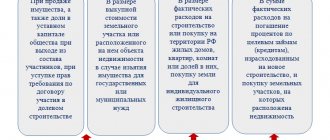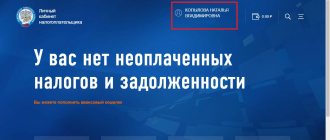High tax rates and regular taxation cause dissatisfaction among the average Russian. As compensation and state support, citizens are provided with various deductions - a refund of income tax already paid on wages or other income.
Such deductions are provided in various situations: when purchasing any property, medicines, paying for education, as well as for minor children. It is the last type of tax deduction (code 114) that is the most common and is applied regularly until the child reaches adulthood or graduates, but not more than 24 years of age.
"Children's" deduction
Income tax refunds for parents with children have the following nuances:
- It is due to both the father and the mother, who works officially and regularly transfers personal income tax in the amount of 13 percent.
- If one of the parents does not work, is on maternity leave, or is registered with the employment center, he is not entitled to a deduction.
- One of the parents can receive the entire refund amount if the other one writes a waiver of his right to a deduction.
- In addition to parents, guardians of children, trustees (from the child’s 14th birthday until adulthood or graduation), as well as adoptive parents can receive such assistance from the state.
- The maximum possible deduction amount is 280 thousand rubles. Once this amount is returned to the applicant, he will no longer be entitled to any income tax refund.
- The number of children also matters: the more there are, the higher the refund amount for the next child will be. Moreover, all children in the family are taken into account, even adults who are not entitled to a tax refund.
In 2015, the following amounts of tax benefits for children were established:
- the first and second child in the family can count on a deduction of 1,400 rubles;
- if there are a third and subsequent children, parents can count on a deduction of 3 thousand rubles;
- an additional benefit is established for a disabled child - 3,000 rubles.
Deductions for non-taxable income received from a tax agent
For a number of deductions, which, in accordance with Art. 217 of the Tax Code of the Russian Federation are not taxed on income in whole or in part; in the table of tax deduction codes for personal income tax since 2015, codes from 501 to 510 are highlighted.
Codes 501 to 506 are reserved for deductions related to the receipt of gifts, prizes, winnings, as well as financial assistance and reimbursement of the cost of purchased medications.
NOTE! The amount of deductions for codes 501 to 506 is limited to 4,000 rubles. and applies for each reason listed in paragraph 28 of Art. 217 of the Tax Code of the Russian Federation, separately.
That is, if an employee received a gift in the amount of 4,000 rubles, for the same tax period he can also claim a deduction for the medicines he actually paid for in the same amount.
The deduction under code 508 for the birth of a child in the family is limited to the amount of 50,000 rubles.
The deduction under code 510 in connection with the payment of additional insurance contributions for an employee for the funded part of the pension is limited to 12,000 rubles.
How to get a child benefit?
You can receive a standard child tax deduction (code 114 or 115) at your place of official employment. The required package of documents is submitted annually. If the applicant receives a double deduction (if one of the parents refuses in writing), documents and certificates will need to be submitted monthly.
The following list of documents will be required:
- an application addressed to the employer requesting a refund;
- applicant's passport;
- birth certificate of all children and marriage;
- certificate 2-NDFL about income level;
- a certificate from the child’s place of study, if he is already 18 years old.
If the employer does not make a refund or the applicant did not manage to exercise his right on time, documents must be submitted to the tax authority at the place of residence. In addition to basic documents and certificates, you will also need a completed tax return. It includes all income other than wages received by the applicant during the year in which the deduction is due.
It could be:
- income from the sale of movable and immovable property;
- profit received from performing one-time services or work under civil contracts;
- rent for rental housing and so on.
The legislation states that the taxpayer who is supporting a minor can receive a deduction (Article 218 of the Tax Code). If the child does not live in Russia, the application for a deduction must also be accompanied by the submission of supporting certificates from the state in which the minor is located.
This could be an agreement on the payment of alimony, a court decision or a writ of execution, a copy of a civil passport with a stamp on the marriage of the spouses, a marriage certificate, a certificate from the Housing Office about the joint residence of the family with the child.
Who uses deduction code 104 in the 2-NDFL certificate
As mentioned above, codes 104 and 105 reflect benefits for categories of persons who have special merits to the Fatherland or who have this benefit for other reasons.
Tax deduction under code 104 monthly reduces the tax base for personal income for a specific person from the list below by 500 rubles. Among them:
- Heroes of the USSR and Russia.
- Participants of the Second World War.
- Siege survivors of Leningrad during the Second World War.
- Civilian employees who took part in defensive activities in a number of cities during the Second World War.
- Persons who were prisoners of concentration camps and ghettos during the Second World War.
Among others, deductions under code 104 can be applied:
- Disabled people of the first 2 groups and persons who have been disabled since childhood.
- Persons who were exposed to radiation during accidents involving radioactive releases.
- Persons who become bone marrow donors in the name of saving other people.
- Persons evacuated from exclusion zones who were exposed to radioactive contamination in different years.
- Other persons listed in sub. 2 p. 1 art. 218 Tax Code of the Russian Federation.
Reflection of deductions in certificates
The most common are deductions for children, first and second, which are displayed in the documentation with the corresponding codes:
- Code 114 - in the 2-NDFL certificate, this code means that the tax deduction is based on the first child who has not yet turned 18/24 years old.
- Code 115 indicates that the refund is made to the parents of the second minor child, a student. Students are subject to the following requirements: training is carried out on a paid basis in an institution of any level of accreditation - institute, university, technical school, and so on.
If the deduction code is incorrectly indicated, the applicant may be refused to provide it or the calculation will be made incorrectly: the taxpayer will receive less tax or will be charged a surplus. In this situation, the employer tax agent is responsible. If an error is detected, he is obliged to notify his employee within 10 days of the fact that the code has been entered incorrectly.
If an overpayment is detected, the excess amount will be deducted from the employee's salary. The unpaid deduction amount will be credited to the applicant's bank account, and in case of delay in payment, a penalty will be charged for each day of delay.
Registration of a tax deduction under code 114 or 115 is a fairly simple and not labor-intensive procedure, especially if it takes place at the place of work of the child’s parents or one of them. It can only be used by a citizen of the Russian Federation who has resident status - officially residing in the country for at least 183 days a year.
Classification of tax deductions in the code table
The table of deduction codes for the purpose of reducing the tax base for personal income tax (PI) includes the following categories of deductions provided for by the Tax Code of the Russian Federation:
- Standard. Currently, codes 104, 105, 114–125 are in effect according to Art. 218 Tax Code of the Russian Federation.
- Social. Codes 320, 321, 324–328 are used, applied in accordance with Art. 219 of the Tax Code of the Russian Federation.
- Property. For codes 311 and 312 based on Art. 220 Tax Code of the Russian Federation.
- Professional. Codes 403–405 are used in accordance with Art. 221 Tax Code of the Russian Federation.
- Investment. Codes 617, 618 and 620 are provided for them (Article 219.1 of the Tax Code of the Russian Federation).
In addition, a number of other articles provide for benefits or a special taxation procedure for certain types of income of individuals.
Since this article is aimed at tax agents for personal income tax, information on deductions applied on the basis of Art. 217 of the Tax Code of the Russian Federation, for which codes are assigned from 501 to 510.
Child tax deduction: what is it and who is eligible for the deduction in 2021
The procedure and amounts for providing a tax deduction for children are regulated by Article 218 of the Tax Code of the Russian Federation. You can read detailed information about what tax deductions are in watch. In relation to deductions for a child, this is the amount from which 13% income tax (NDFL) is not withheld.
If the spouses have a child from previous marriages, then the common child will be considered the third.
The standard child tax deduction in 2021 is made for each child :
- under the age of 18;
- for each full-time student, graduate student, resident, student, cadet under the age of 24. The refund amount is no more than 12,000 rubles.
The right to a refund is lost in the following cases:
- coming of age (or graduating from an educational institution after the age of 24);
- official marriage of the child;
- his death.
Each parent, including adopted parents, as well as guardians and trustees, has the right to receive a tax deduction for children in 2021.
Personal income tax deduction code 115
Until 2012, there was a standard deduction for both the first-born and the second child. At the moment, deductions for children depend on how many there are in the family. Different codes apply for the first and also for the next child. If we look at the reference book of these codes, we will see that for the second child the Personal Income Tax Deduction Code is 115, and for the first child it is 114. Withholdings for children in 2015 will be presented to their parents at the place of service.
The child tax credit is only available if the parent pays the 13% tax rate. The Tax Code provides for several methods of deduction. Many parents often wonder where they can get a tax deduction and where to go for this. Tax deduction code 115 is fixed in one of the articles of the NG. We are talking about Article 218.
This type of deduction is standard. The amount of such a deduction will not depend on what tax the parent pays or what salary he receives, but will depend only on the number of children. If a citizen of the Russian Federation has several children or even one child in his care, then he will be provided with a tax credit for the child.
How the benefit is applied in practice
Having figured out what deduction code 115 means in the 2-NDFL certificate, it is easy to track its application in practice. The legislator has provided in the Tax Code of the Russian Federation a limit on the amount of total annual income taxed at a rate of 13%, to which the benefit corresponding to code 115 is applied - “for the maintenance of the 2nd child.”
In the periods preceding 2021, there was a limit of 280 thousand rubles, then legislators increased the amount to 350 thousand rubles. In practice, 1,400 rubles are deducted monthly from taxable income at a rate of 13% on an accrual basis from the beginning of the billing period until the month in which its maximum level is exceeded.
In 2021, the legislator introduced a modified coding system for standard deductions. Cipher 115 in the new list of codes corresponds to the following values:
- 127 — a benefit in the amount of 1,400 rubles for the 2nd child to the adoptive parent;
- 131 - a benefit in the amount of 1,400 rubles for the 2nd child to a guardian - trustee, adoptive parent.







